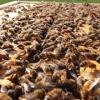Leaderboard
-
in all areas
- All areas
- Marker
- Events
- Event Comments
- Files
- File Comments
- File Reviews
- Images
- Image Comments
- Image Reviews
- Albums
- Album Comments
- Album Reviews
- Blog Entries
- Blog Comments
- Topics
- Posts
- Cummins Articles
- Cummins Article Comments
- Cummins Article Reviews
- Vendors
- Vendor Comments
- Vendor Reviews
- Ads
- Ad Comments
- Ad Reviews
- Policies
- Policy Comments
-
Custom Date
-
All time
December 14 2009 - July 21 2025
-
Year
July 20 2024 - July 21 2025
-
Month
June 20 2025 - July 21 2025
-
Week
July 13 2025 - July 21 2025
-
Today
July 20 2025 - July 21 2025
-
Custom Date
10/05/2013 - 10/05/2013
-
All time
There are no members to show
Popular Content
Showing content with the highest reputation on 10/05/2013 in all areas
-
Diesel fuel additive??
1 pointStill not a issue. If you get one tank of winterized fuel it will not gel up at all. Even if it does your not driving it so your still safe and till will be fine by spring. Diesel fuel isn't gasoline where all the fuel actually evaporates. Diesel fuel will not evaporate and being its in a confined tank with a cap I doubt seriously there will be any issues.1 point
- 1920's Dodge - Oil Field Dodge Promotion
-
Diesel fuel additive??
1 pointSimple... * Injector cleaners - Not required. If you want to clean injectors remove and hand clean there is no solution in a bottle. Think about it PS is 400:1 ratio. So you have 4,480 ounces of fuel, and adding 11.2 ounces to 35 gallons of fuel. This is only a 0.2% solution! Even with 100% injector cleaner it still will not clean the carbon off. The only thing I heard of from ISX is Carb Dip. Still you need to wipe all parts off to remove the carbon. * Cetane - Increasing cetane will decrease BTU's of the fuel. So you want to reduce the cetane to gain BTU's. Dark green - summer fuel -=- Light green - Winter fuel * Lubricity - Today's fuel here in the US does NOT meet Bosch's standards at all. Bosch requires <450 HFRR for fuel lubricity score. Today's fuel is about ~520 HFRR on average. As you'll see below is really damaging to a Bosch VP44 Injection Pump. From top left - Pump shaft top right - pump vane hub. From bottom left - roller shoes bottom right - Advancement piston From top left - Pump shaft top right - pump vane hub. From bottom left - roller shoes bottom right - roller shoes * Summary - This is why most people use strictly 2 cycle oil. Because it does reduce cetane (increase BTU's), decreases HFRR score to score that meets of exceeds Bosch's requirements.1 point
-
Diesel fuel additive??
1 pointDo not mix products. Mixing like you show PS and 2 cycle oil negates both products. PS = Cetane booster (lowe BTU's) 2 Cycle = Cetane reducer (higher BTU's) PS = High HFRR score (lower in lubricity) 2 cycle = Lower HFRR score (high in lubricity) So you been wasting money on two products washing out both and going no where. Any additive with a score less than 450 HFRR s best. Remember the 2 cycle oil score is poor because its 200:1 ratio 128:1 is roughly 380 to 420 HFRR.1 point
-
Hey everybody! HELP!!
1 pointOne thing I recommend everyone do when they buy a CTD, adjust the valves. I'm pretty sure there is a write up on it. I can't believe some of the engines I have adjusted valves on were even running. Seems that the 12v were worse about it than the 24v engines, however I think that was mainly due to most dodge dealers not having a diesel tech and just threw someone on them to adjust valves that didn't have a clue how to and either didn't have the info or was to lazy to look it up.1 point
-
Yellowstone Supervolcano Alert:
1 pointI have a cousin who works for the geological college in Butte Mont. and when I visited him a few years ago he took me through the seismic center which is among the best in the world and they were monitoring this very closely then already, it was awesome to see what they can see and detect. http://endoftheamericandream.com/archives/yellowstone-supervolcano-alert-the-most-dangerous-volcano-in-america-is-roaring-to-life Right now, the ground underneath Yellowstone National Park is rising at a record rate. In fact, it is rising at the rate of about three inches per year. The reason why this is such a concern is because underneath the park sits the Yellowstone supervolcano – the largest volcano in North America. Scientists tell us that it is inevitable that it will erupt again one day, and when it does the devastation will be almost unimaginable. A full-blown eruption of the Yellowstone supervolcano would dump a 10 foot deep layer of volcanic ash up to 1,000 miles away, and it would render much of the United States uninhabitable. When most Americans think of Yellowstone, they tend to conjure up images of Yogi Bear and “Old Faithful”, but the truth is that sleeping underneath Yellowstone is a volcanic beast that could destroy our nation in a single day and now that beast is starting to wake up. The Yellowstone supervolcano is so vast that it is hard to put it into words. According to the Daily Mail, the magma “hotspot” underneath Yellowstone is approximately 300 miles wide… The Yellowstone Caldera is one of nature’s most awesome creations and sits atop North America’s largest volcanic field. Its name means ‘cooking pot’ or ‘cauldron’ and it is formed when land collapses following a volcanic explosion. In Yellowstone, some 400 miles beneath the Earth’s surface is a magma ‘hotspot’ which rises to 30 miles underground before spreading out over an area of 300 miles across. Atop this, but still beneath the surface, sits the slumbering volcano. When most Americans think of volcanic eruptions in the United States, they remember the catastrophic eruption of Mount St. Helens back in 1980. But that eruption would not even be worth comparing to a full-blown eruption of the Yellowstone supervolcano. And now the area around Yellowstone is becoming increasingly seismically active. In fact, Professor Bob Smith says that he has never seen anything like this in the 53 years that he has been watching Yellowstone… Until recently, Bob Smith had never witnessed two simultaneous earthquake swarms in his 53 years of monitoring seismic activity in and around the Yellowstone Caldera. Now, Smith, a University of Utah geophysics professor, has seen three swarms at once. In September, 130 earthquakes hit Yellowstone over the course of a single week. This has got many Yellowstone observers extremely concerned… Yellowstone’s recent earthquake swarms started on Sept. 10 and were shaking until about 11:30 a.m. Sept. 16. “A total of 130 earthquakes of magnitude 0.6 to 3.6 have occurred in these three areas, however, most have occurred in the Lower Geyser Basin,” a University of Utah statement said. “Notably much of seismicity in Yellowstone occurs as swarms.” So what is the worst case scenario? Well, according to the Daily Mail, a full-blown eruption of Yellowstone could leave two-thirds of the United States completely uninhabitable… It would explode with a force a thousand times more powerful than the Mount St Helens eruption in 1980. Spewing lava far into the sky, a cloud of plant-killing ash would fan out and dump a layer 10ft deep up to 1,000 miles away. Two-thirds of the U.S. could become uninhabitable as toxic air sweeps through it, grounding thousands of flights and forcing millions to leave their homes. Can you think of another potential disaster that could accomplish the same thing? That is why what is going on at Yellowstone right now is so important, and the American people deserve the truth. The following are some more facts about Yellowstone that I compiled that I included in a previous article… #1 A full-scale eruption of Yellowstone could be up to 1,000 time more powerful than the eruption of Mount St. Helens in 1980. #2 A full-scale eruption of Yellowstone would spew volcanic ash 25 miles up into the air. #3 The next eruption of Yellowstone seems to be getting closer with each passing year. Since 2004, some areas of Yellowstone National Park have risen by as much as 10 inches. #4 There are approximately 3,000 earthquakes in the Yellowstone area every single year. #5 In the event of a full-scale eruption of Yellowstone, virtually the entire northwest United States will be completely destroyed. #6 A massive eruption of Yellowstone would mean that just about everything within a 100 mile radius of Yellowstone would be immediately killed. #7 A full-scale eruption of Yellowstone could also potentially dump a layer of volcanic ash that is at least 10 feet deep up to 1,000 miles away. #8 A full-scale eruption of Yellowstone would cover virtually the entire midwest United States with volcanic ash. Food production in America would be almost totally wiped out. #9 The “volcanic winter” that a massive Yellowstone eruption would cause would radically cool the planet. Some scientists believe that global temperatures would decline by up to 20 degrees. #10 America would never be the same again after a massive Yellowstone eruption. Some scientists believe that a full eruption by Yellowstone would render two-thirds of the United States completely uninhabitable. #11 Scientists tell us that it is not a matter of “if” Yellowstone will erupt but rather “when” the next inevitable eruption will take place. What makes all of this even more alarming is that a number of other very prominent volcanoes around the world are starting to roar back to life right now as well. For example, an Inquisitr article from back in July described how “the most dangerous volcano in Mexico” is starting to become extremely active… Popocatepetl Volcano is at it again. The active volcano near Mexico City erupted again this morning, spewing ash up into the sky. The volcano is currently in the middle of an extremely active phase. According to the International Business Times, the volcano has registered 39 exhalations in the last 24 hours. An eruption earlier this month caused several flights to be canceled in and out of Mexico City. The BBC notes that officials raised the alert level yellow following Popocateptl’s eruption on Saturday morning. Yellow is the third-highest caution level on the city’s seven step scale. And an NBC News article from August noted that one of the most dangerous volcanoes in Japan has erupted 500 times so far this year… Ash wafted as high as 3 miles above the Sakurajima volcano in the southern city of Kagoshima on Sunday afternoon, forming its highest plume since the Japan Meteorological Agency started keeping records in 2006. Lava flowed just over half a mile from the fissure, and several huge volcanic rocks rolled down the mountainside. Though the eruption was more massive than usual, residents of the city of about 600,000 are used to hearing from their 3,664-foot neighbor. Kagoshima officials said in a statement that this was Sakurajima’s 500th eruption this year alone. So what does all of this mean? Are we now entering a time when volcanic eruptions will become much more common all over the globe? Could we rapidly be approaching the day when an absolutely devastating volcanic eruption will paralyze much of North America? Please feel free to share what you think by posting a comment below… Yellowstone Volcano Eruption1 point
- Paul Harvey Ram Trucks Superbowl Spot
-
Anyone heard of...
1 pointAww Schucks... just send me some reputation points, and we can call it even!1 point
This leaderboard is set to Boise/GMT-06:00






